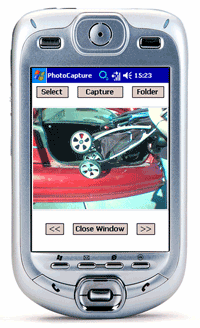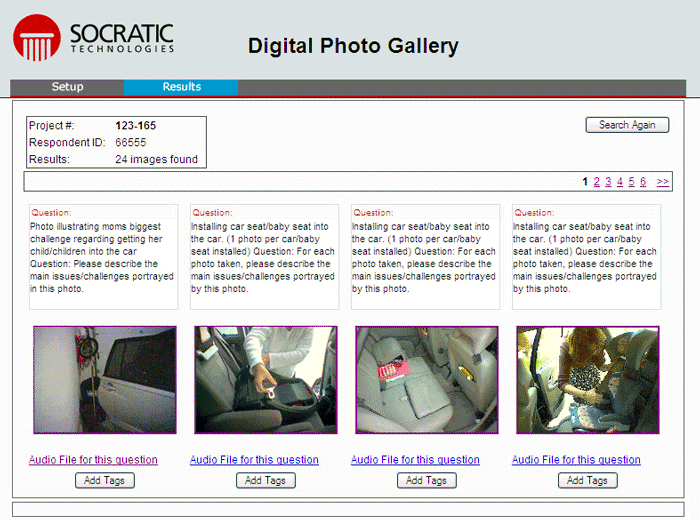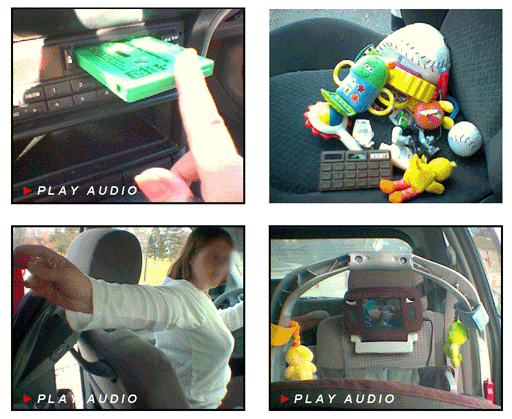Let me show you what I need
Editor’s note: Kari McGlynn is qualitative project director at Socratic Technologies Inc., a San Francisco research firm.
In the ongoing quest to deliver desirable new products quickly, manufacturers are increasingly focusing on ways to rapidly examine opportunities within the early stages of the design process.
The “fuzzy front end,” a term coined by product development expert Don Reinertsen, refers to the conceptual or planning stages of product design, where emerging market opportunities and user needs are first discovered and established.
Ethnography has emerged as an important tool utilized throughout the product development cycle. Observing a consumer’s actual behavior within a particular role or context provides designers with a grounded set of conditions upon which to base their ideas. Watching end users interact with a product in its real-life context can offer invaluable insights for how to further refine that product’s design.
Logistical challenges
Traditional ethnographic research methods, however, pose their own logistical challenges. Depending on the scope of a product’s reach within the marketplace, observing an adequate cross section of end users can require significant travel. One of the biggest complaints from research clients regarding ethnography is that the process is too costly and time-consuming.
Still, as product lifecycles shorten and the need to consistently reevaluate and revise product design increases, user-centered research utilizing ethnography is becoming more and more important. To embrace the rapid pace of a user-driven product development lifecycle, manufacturers need rapid, user-centered feedback channels for informing the entire process.
 Beginning in early 2005, a new class of technological solutions began to become widely available. One such solution comes in the form of a mobile device, similar to a Pocket PC, which features an onboard camera and audio recorder (Figure 1). A software application loaded on the device provides interactive instructions as to what lifestyle events are to be captured, allows users to take pictures using the camera and attach audio recordings to these images. Furthermore, the mobile device features wireless Internet connectivity, thereby allowing respondents to instantly upload their photos and voice notes to the Web upon completion of an assignment. In essence, this combination of hardware, software and networking technology allows ethnographers to shift the observation from an in-person task (i.e., expensive and time-consuming) to a remote, digital exercise (e.g., far less expensive and quick.)
Beginning in early 2005, a new class of technological solutions began to become widely available. One such solution comes in the form of a mobile device, similar to a Pocket PC, which features an onboard camera and audio recorder (Figure 1). A software application loaded on the device provides interactive instructions as to what lifestyle events are to be captured, allows users to take pictures using the camera and attach audio recordings to these images. Furthermore, the mobile device features wireless Internet connectivity, thereby allowing respondents to instantly upload their photos and voice notes to the Web upon completion of an assignment. In essence, this combination of hardware, software and networking technology allows ethnographers to shift the observation from an in-person task (i.e., expensive and time-consuming) to a remote, digital exercise (e.g., far less expensive and quick.)
Unique user needs among mothers
The primary objective of one of our first projects using the remote digital ethnographic method was to examine unique user needs among mothers with regard to transporting their young children by car.
The study involved expectant mothers and mothers with young children (ages 0-6) who currently leased or owned a variety of different vehicle types. The study called for reaching women throughout the country, and utilizing a traditional ethnographic approach would be impractical, given cost and time constraints.
To kick the study off, we fielded an online screener survey to nearly 200 female panelists provided by BabyCenter.com’s 21st Century Mom Panel. The screener included a variety of measures ensuring that the respondents fit the research requirements and would be active, articulate participants.
From those who completed the screener survey, a total of 20 women were selected. These women represented a diverse mix of geographic locations, parental experiences and vehicle ownership. All 20 respondents were contacted by phone prior to being shipped their mobile device in order to ensure their full comprehension of the methodology being utilized and to verify their willingness to participate.
Detailed instructions
Within a few days of the follow-up phone calls, mobile devices were being delivered to each respondent, along with detailed instructions on how to use the onboard software application to take photos and record voice notes. These instructions included the discussion guide topics for the research, which consisted of a series of 15-18 photo assignments with corresponding follow-up questions.
The participating women were given a period of one week to complete their assignment. During the course of that week, a project director was available by phone in case any of the respondents had problems with their devices or needed to ask a question about the study. In general, most respondents found the device to be intuitive and completed the assignment within the first few days, while a handful of respondents did not complete the entire assignment. A total of 16 of the 20 respondents successfully submitted their photos and voice notes.
Upon completion of the assignment, respondents launched an additional application on their mobile device that directly uploaded the data they collected to our technology partner’s Internet server. From there, we were able to download each respondent’s collection of images and accompanying audio to our own server, where these files became available for viewing and listening within a proprietary gallery application (Figure 2). Within this application, clients and project directors had access to all of the data for both individual respondents and individual discussion guide topics. We particularly like aspects of the system that allowed images to be tagged with query terms as well to facilitate the search process for pictures that share a theme. Combined with the data from other projects, the resulting database can be searched further for salient findings and cross-referenced among other studies and topics.

Rich imagery
By placing our respondents in the role of storyteller, we were able to collect rich imagery and detailed audio recordings. The mothers participating in the study thoroughly documented all of the different steps and elements involved in transporting their children by car. Through their accounts, a variety of specific challenges came to light:
• Current and expectant mothers have unique needs requiring that they be able to manipulate the space within their vehicles efficiently. They are more likely to value versatile space management features, such as tilt steering, adjustable cup holders, specialized storage compartments and individual folding rear seats.
• Installing a child’s car seat is such a challenging process in many vehicles that some mothers of young children require help in order to do it properly, and many will leave the child seat in the car permanently for fear of having to repeat it.
Set of opportunities
Thus, the results of the research uncovered a unique set of opportunities for new features and vehicle designs that address the needs of women with young children. For example, most mothers rely on their car’s rearview mirror to keep an eye on their children while driving. This provided observationally-based evidence that a market opportunity might exist to provide moms with specialized devices allowing them to better monitor their children in the car, thereby reducing the need to turn their attention away from the road.
Having collected a rich cache of compelling multimedia feedback, we decided to let the data speak for itself by embedding images and audio clips directly into the research report (Figure 3). Publishing the report as an Adobe PDF document, we were able to include pictures that acted as hyperlinks - playing an audio file containing a corresponding quote when clicked. The result was a rich, interactive experience for the reader that provided an additional layer of direct interpretation by giving them access to the source material of the study.

Brings researchers closer
Through leveraging new technology to allow the instant transmission of self-collected data from respondents, this new approach brings researchers closer to realizing the benefits of traditional ethnographic fieldwork with less time and fewer cost considerations.
In total, this methodology required less than four weeks to go from kickoff to report delivery. For future projects, mobile devices might be pre-positioned in the field ahead of time, allowing for the rapid collection of lifestyle data with even shorter project turnaround times. This might also be beneficial for long-term longitudinal studies. In either case, the result will be dramatically lowered costs.
During the early stages of product design - such as market evaluation, prototyping and product testing - remote digital ethnography may hold the key to quickly and affordably assessing user needs across cultural and geographical boundaries. Although the technology is still in the nascent phase, our experience has been positive and we look forward to ongoing development enabling the efficient use of this interesting technique.
